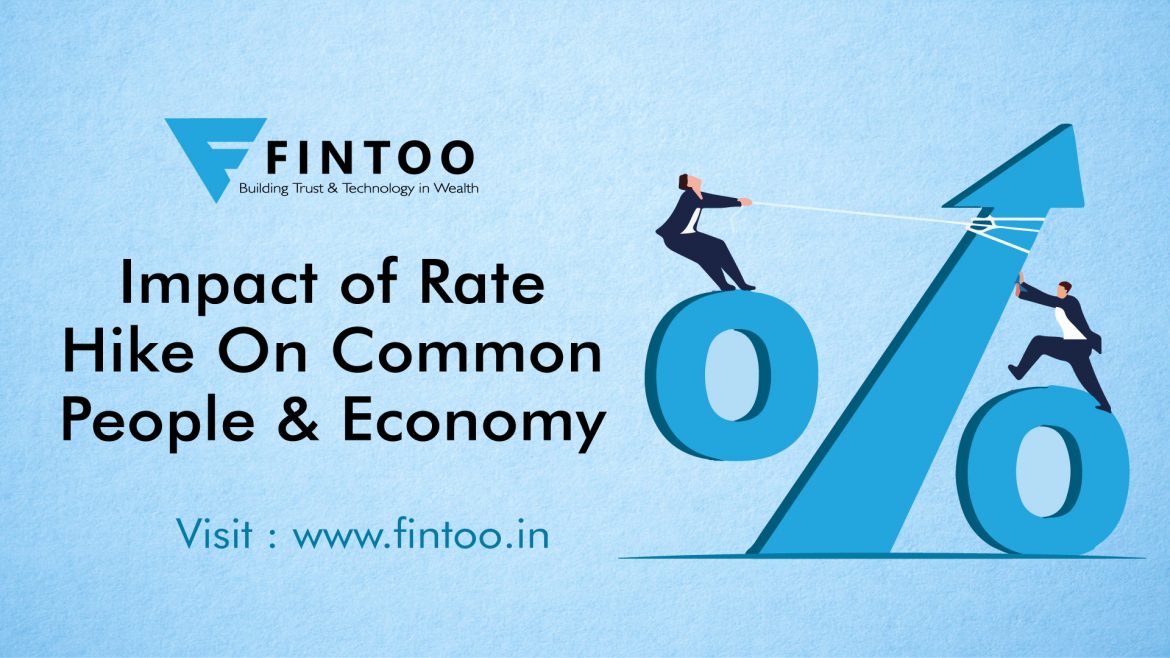

The Reserve Bank of India raised the repo rate by 40 basis points (bps) to 4.40 percent in an unscheduled meeting and surprised the market.
The Monetary Policy Committee (MPC) unanimously decided to hike rates for the first time since August 2018, while keeping the stance accommodative.
Let us understand why was this necessary to call for an unscheduled meeting?
This was done to address the rising inflationary scenario as inflation has remained above the target of 6 percent for the last three months and was last recorded at 6.95 percent in March as compared to 6.07 percent in February 2022. Wholesale price index (WPI) inflation also touched 14.55 percent in the same month.
Not just the Repo rate, Cash Reserve Ratio is raised to suck out Rs 87,000 crore of liquidity from the banking system. 50 bps points hike was announced in CRR, to make it 4.5 percent. The CRR hike will be effective from May 21.
Why did it happen?
Because of the sharp rise, in the inflation outlook, along with the increasing pace of monetary policy tightening by major global central banks, led to this unscheduled move.
Who will it impact?
- Borrowers
- Borrowing costs will increase
- EMIs will go up for new borrowers
- For existing borrowers, your loan tenure will increase or EMI will rise as opted by you.
- FD investors
- Banks are likely to offer greater interest to FDs.
- The bond prices have reacted negatively, which was expected. We believe that floating rate funds may do well in such a situation.
Future Expectations
Market participants should expect at least a 25 bps hike in June as well. We expect the RBI to hike the repo rate by another 75-100 bps this fiscal. The hikes are likely to be frontloaded.
FOMC Meeting
Another important event that market participants were eagerly waiting for was the FOMC Meeting.
FED announced a rate hike by 50bps which was in line with market expectations owing to record-high inflation in the US.
This is the most aggressive pace of interest rate hike in 22 years.
Rate hikes by the US FED are leading to a big outflow of funds and are putting pressure on the Rupee requiring currency management by the RBI.
Future Expectations
S&P Global expects seven rate hikes by the US FED in the Calendar year 2022.
FII remained net sellers in the Indian capital market for seven months. The critical reason for FII selling was the expectation of a faster than expected rate hike by the US FED. And this may continue further.
What should investors do?
During turbulent times like these, there will be thousands of different pieces of advice pouring in to tell you to change your investment strategy or move into new sectors, asset classes, etc. But one should not panic and the best thing to do is
- To IGNORE the noise
- Keep your investment plan intact
- Stick to your asset allocation
- Keep your SIPs running
It is always about the time in the market rather than timing the market which determines the quantum of long-term returns.
Conclusion
RBI has regained confidence in terms of its fight against inflation. It is a welcome step as far as the pace of policy resetting goes. But with this move of maintaining an accommodative stance, there is a risk of falling behind the curve in the future because it limits the RBI’s freedom of future rate actions in coming meetings. It is always advisable to consult a Financial Advisor to avoid making any hurried decisions in current volatile times.
A financial planning platform where you can plan all your goals, cash flows, expenses management, etc., which provides you advisory on the go. Unbiased and with uttermost data security, create your Financial Planning at Rs99/-
Disclaimer: The views shared in blogs are based on personal opinions and do not endorse the company’s views. Investment is a subject matter of solicitation and one should consult a Financial Adviser before making any investment using the app. Making an investment using the app is the sole decision of the investor and the company or any of its communication cannot be held responsible for it.
